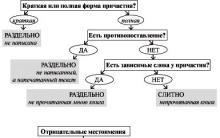Many times, driving along the Moscow ring road, we saw the very beautiful Annunciation Church. Finding ourselves once again in Mytishchi, we finally decided to take a closer look at it, especially since the history of this place is quite ancient and is associated with the names of many Russian tsars.
This temple stands on the lands of the former village of Taininskoye, known since 1401 as the possession of the Serpukhov prince Vladimir the Brave. Even now, despite some abandonment, the proximity of the Moscow Ring Road (between Ostashkovskoye and Yaroslavskoye highways, outer side) and several chimneys of a thermal power plant, this area looks picturesque.

The confluence of the Sukromka and Yauza rivers gives the landscape a certain romanticism.

Perhaps this is what prompted Tsar Ivan the Terrible to build a travel palace in Taininsky, where he stopped on his way to the Trinity-Sergius Lavra on a pilgrimage. During his time, the first wooden church was founded here, but it has not survived. For some time, this village was one of the centers of the oprichnina; here the cruel tsar executed the boyars he disliked. Boris Godunov and both False Dmitrys visited Taininsky. The first impostor met here with the last wife of Ivan the Terrible, Maria Naga, and persuaded her to recognize him as her son, but this did not save False Dmitry from imminent execution. The first kings of the Romanov dynasty: Mikhail Fedorovich and Alexei Mikhailovich also loved to hunt in Taininsky. During the latter, the unique Annunciation Church was founded - the only thing that has been preserved from the former royal residence.

Under Peter the Great, this estate did not receive attention; the wooden palace began to deteriorate and collapse. Only Elizaveta Petrovna allocated funds for the construction of a new travel palace on an island formed by two rivers, and in 1749 it was built. It was a rectangular building with three towers. The first floor was divided into 12 rooms, and the second into four and a large hall. The interior was richly decorated. Catherine the Great also liked Taininskoye, who celebrated her birthdays here. At that time, the palace was surrounded by a park, ponds were dug, gazebos were installed and utility buildings were built. However, gradually all the entertainment events of the royal family moved to St. Petersburg, and the Moscow residence again began to collapse. The famous author of the history of the Russian state N.M. Karamzin once visited Taininskoye and was amazed at the neglected state of this estate.

Thick trees practically covered the palace and the temple, the river was very swampy, the bridges were so rotten that it was difficult to cross them to the other side, and there was waist-deep grass all around.

This is exactly how we see Taininskoye now.

The only thing not preserved was the wooden palace, which burned down in 1823, which Karamzin was still lucky enough to see, albeit in the most pitiful form. Over time, private houses began to appear around. After the revolution, the unique Church of the Annunciation of the Blessed Virgin Mary was closed and used for economic needs. Now he is active again.

You can admire its amazing white stone carvings, a porch with staircases diverging in different directions and stunning landscape vistas that open onto it from different sides.


It is not known how long such a secluded life of this place will last, because there are plans to build another MEGA with Ikea in close proximity, which will undoubtedly destroy the atmosphere and picturesqueness of this royal estate.

Although there are other, more rosy plans: to restore the travel palace and organize a museum here. I really hope this happens.
A few meters from the Annunciation Church there is a neat park, in the center of which in 1996 a monument to the last Russian Tsar Nicholas II was erected.


However, a year later, the monument in Taininsky was blown up by the extremist organization Revolutionary Military Council. Then the sculptor made a new monument, which was installed in the park in 2000 almost at the same time when the Cathedral of Christ the Savior was opened. Many public figures were present at the opening of the monument to the king. Apparently, for protective purposes, the sculpture was surrounded by a low fence. Nowadays, members of various nationalist and monarchist organizations who advocate the restoration of the monarchy in Russia periodically gather near this monument. There is even a so-called club that organizes acts of general repentance at the monument for the murder of the Tsar. Luckily, during our walk in the park, only dads were seen walking with strollers and small children. Since the place here is remote from residential buildings and very sparsely populated, mothers are probably scared to go out here for walks.

Let's hope that Taininskoye will be restored as a museum, where people interested in history can learn better about the life and entertainment of the Russian tsars, and will not turn this place into another giant shopping complex, which will certainly destroy the unique atmosphere of this estate and stunning landscape vistas with views of temple.

Today we will tell you a little about the history of the ancient village of Taininskoye, located in close proximity to Moscow, some hundred meters from the Moscow Ring Road, within the city of Mytishchi.
The village of Taininskoye was first mentioned in 1401 in the spiritual charter of the Moscow appanage prince Vladimir Andreevich the Brave of Serpukhov, hero of the Battle of Kulikovo, cousin of the Grand Duke of Moscow and Vladimir Dmitry Ivanovich, not quite deservedly known as Donskoy. After all, everyone who has studied the chronicle texts about the Battle of Kulikovo knows that the real commanders, under whose leadership the victory was won on the Kulikovo Field, were Prince Vladmir Andreevich and the governor Dmitry Bobrok-Volynsky, and not the Grand Duke of Moscow. However, perhaps I will write about this later.
Throughout the 15th century, the village was the center of a large volost. In 1456, the owner of the village became the Grand Duke of Moscow Vasily II Vasilyevich, nicknamed the Dark, and then his son Prince Andrei Menshoi of Vologda. In 1481, the village was inherited by the son of Ivan the Great, Vasily, the future sovereign Vasily III. From that time on, Taininskoye became a grand ducal and then a royal village. Located on the road to the Trinity-Sergius Monastery, where Russian monarchs regularly went on pilgrimage, the village of Taininskoye became the country residence of Moscow sovereigns. During the time of Ivan the Terrible, the village became one of the centers of the oprichnina.
In the summer of 1605 (July 18), False Dmitry (Grigory Otrepiev) meets here with his “mother” - nun Martha ( tonsured a nun by the last wife of Ivan the Terrible - Maria Nagaya), who recognizes the impostor as her "miracle saved" son - Dmitry.
S. M. Solovyov described this event as follows: the impostor “had a meeting with her alone in a tent pitched near the high road; they say that Martha very skillfully represented the tender mother, the people cried, seeing how the respectful son walked on foot near his mother’s carriage.. ".
In June 1608, the troops of the “Tushinsky thief” - False Dmitry II - were stationed in Taininsky, and in August 1612 the militia of Minin and Pozharsky stopped here.
The surrounding area of the village has long been famous for its hunting grounds; under Ivan the Terrible, “bear games” were held here, and Tsar Alexei Mikhailovich the Quiet amused himself with falconry here. Alexei Mikhailovich liked the village of Taininskoye and its surroundings so much that he ordered a stone temple to be built here.
Construction began during the lifetime of Tsar Alexei in 1675. But it was completed in September 1677, after the death of the Quiet Tsar.

The Church of the Annunciation of the Blessed Virgin Mary is a unique architectural structure. It consists of three main parts: the church itself, a refectory in two tiers and a large porch. The church building is a cube with narrow and elongated windows on both sides. Along the top of the cube there is a wide cornice made of brick.
The harmony and harmony of this part of the building became even more obvious when the church was restored in the 70s of the twentieth century. During its course, three rows of kokoshniks were restored, representing a gradual transition from the quadrangle of the building to five drums, topped with small onion-shaped domes.
The main attraction of the temple is its porch.
The famous art critic M.A. Ilyin described it this way: “The paired staircases, diverging to the sides and covered with “creeping” vaults and arches, alternate with landings-lockers, topped with tents on pillars. In the center there is a hollow, as if in cross-section, “barrel.” This barrel, although made of brick on an iron frame, is directly related to the decorative form that was often used in those years in wooden architecture.It is here, in Taininsky, in the facade of the refectory that we feel with particular brightness the mutual influence of stone and wooden forms, which had such an impact brightly in ancient Russian architecture. Everyone who has visited Taininsky will remember this rare work of Russian architectural art for a long time."
Take a closer look at the church porch. Does it look like a temple building? But this is a real tower, decorated with marvelous patterns and embodying the best traditions of Russian architecture of former times.

The place for the construction of the temple was not chosen by chance, but wisely: on the high bank of the Yauza and the small river Sukromka flowing into it. When a dam was built at their confluence, the water spread widely, and an island formed in the middle. Tsar's palaces began to be built on it since the time of Ivan the Terrible, and according to some information even earlier, under Vasily III.
The royal palaces were located on the island until 1823, when the chambers of Elizabeth Petrovna burned down.
However, a separate article is worth writing about the royal palaces of the village of Taininsky. In the meantime, let's return to the Annunciation Church and its history.
On September 9, 1677, Tsar Fyodor Alekseevich ordered everything necessary to be prepared for the consecration of the new temple. Ancient icons from the wooden church that stood on this site were transferred to the new church. Thanks to parishioners and contributors, the iconostasis of the church became six-tiered, with rich frames.
The temple was significantly damaged during Napoleon's invasion. Throughout the 19th century, the Church of the Annunciation increasingly lost its significance, although church services there continued until 1929, when the temple was closed.
During Soviet times, the church housed a laundry, a radio parts workshop, a club, a canteen, a dormitory, a workshop for cabinetmakers, doll makers and graphic designers.
Currently, the temple, returned to the Church, is operational. It, preserved literally by a miracle, appears before us, thanks to the work of restorers, as it was intended by the architects of the 17th century.


When working on this article, I turned to the books by Yu. A. Knyazev “The Past of the Land of Mytishchi” (M., 2001) and M. A. Klychnikova “Mytishchi. A guide to the city and region (Mytishchi, 2005).
Sergey Vorobiev.
Church of the Annunciation Holy Mother of God in Taininsky erected in a palace village, which stood on the way from Moscow to. The appearance of a stone church here became a kind of confirmation of the high status of Taininsky - not only as one of the main points of royal pilgrimages to the monastery, but also as a favorite place for hunting fun.
At the end of his life, Tsar Alexei Mikhailovich decided to decorate his beloved Taininskoye with an unprecedented stone temple, which, as we now see, was more suitable for the streets of the capital rather than the countryside. But the autocrat’s word is law, and in 1675 large construction work began in the village.
Taininskaya Church It took two years to build - the temple, equipped with a unique porch with a huge barrel in the center, was consecrated on September 9, 1677, when he had already inherited the Russian throne. Three days before the consecration, the sovereign made a rich contribution to the newly built church.
The celebrations died down, and Church of the Annunciation of the Blessed Virgin Mary in Taininsky began his life in the palace village. No one imagined then that the time was not far off when the youngest son of Alexei Mikhailovich, the reformer Tsar Peter I, would turn his gaze to the north, and the former royal villages would gradually fall into decay.
Sasha Mitrakhovich 02.05.2018 07:44

In the photo: Over the centuries, the Annunciation Church in Tainitsky has undergone virtually no reconstruction or correction - only routine repairs were carried out. And in this drawing from the mid-1850s, he looks the same as he looked at the end of the 17th century.
« Taininskaya Church does not have its own chronicle,” complained one of the authors of the mid-19th century. To be more precise, the history of the Taininsky church coincides with the chronicle of the palace village. From the beginning of the 1930s, there was a break in the church chronicle itself, which was overcome only at the end of the 1980s.
Some alterations to the interior also date back to the time of ownership. Church of the Annunciation in Taininsky.
Elizaveta Petrovna did not leave the Annunciation Church in Taininsky with her attention. Back in 1751, she ordered the construction of a refectory chapel in the northern part, but for various reasons it was consecrated - in the name of Saints Zechariah and Elizabeth - only in 1763, after the death of the queen.
In 1812 Church of the Annunciation suffered greatly from the French. The invaders did not advance north of Mytishchi - they were stopped by thick fog, inexplicable fear and rumors that a huge number of Russian troops were concentrated closer to it (in fact, the monastery was covered only by sparsely populated Cossack detachments).
People said about the French that it was “Reverend Sergius who blinded them.” But in the captured villages (Taininskoye, Bolshie Mytishchi and others), the French staged a real fiery Sabbath - after the expulsion of the invaders Taininskaya Church had to be restored and reconsecrated. Around this time (according to other sources, even earlier), the church lost its status as a royal house church, turning into an ordinary parish church.
In 1929, the Bolsheviks closed the Annunciation Church. He endured years of humiliation and sacrilege. The building successively housed a club, a bakery, a workers' dormitory, a meat shop, a waste warehouse, a decorative toy factory, and metalworking workshops. A football field was built on the site of the destroyed cemetery.
Each new “owner” tailored the monument to suit himself, without any concern for its historical and cultural value. The commission that examined the temple in 1945 noted melancholy:
“All the ceilings, doors, window frames and frames were broken. Crosses are broken, chapters are open. The inside of the building is dirty... A wonderful monument stands in complete disrepair and oblivion...”
Thank God, the fight against God in our country has found its inglorious end. In 1989, the Annunciation Taininskaya Church was returned to believers.
Sasha Mitrakhovich 02.05.2018 08:38

Now Church of the Annunciation in Taininsky lives a correct liturgical life. Behind us is the struggle to return the church to believers, many years of restoration work, the formation of a parish, and the emergence of new traditions. Now in Taininskaya Church on days when services are held, it is always crowded.
Surprisingly, in order for the Taininskaya Annunciation Church to be returned to the believers, it took the intervention of the then Soviet Prime Minister N.I. Ryzhkova.
It was the activists who began to put the building of the Annunciation Church in order, disfigured by Soviet management, at their own peril and risk. Local authorities did not interfere with them and even helped them with equipment - as it later turned out, for selfish purposes: they planned to set up a hotel in the former church.
Ryzhkov, having carefully listened to the initiators of the restoration of the temple, firstly, put an end to the idea of giving the temple area to an aeration station, and secondly, asked the district leaders to transfer the temple to the believers. This request, in essence, was an order - and in 1989, the Annunciation Church was returned to the Church.
The first Liturgy in the revived church was served on September 21, 1990, on the Feast of the Nativity of the Blessed Virgin Mary. Parishioners helped equip the church - they participated in repairs, brought icons, Orthodox books, and necessary utensils to the church.
At the same time, new traditions were established - a Sunday school for children was in operation, church singing classes were held, conversations were organized for adult parishioners, and the stock of the public library was replenished.
Sasha Mitrakhovich 02.05.2018 11:22

Architecture of Taininskaya Church can be considered one of the best examples of “Russian patterning”, in many ways inheriting the Russian temple architecture of the 16th century - but with special attention to the abundant decoration of the exterior.
This style experienced its heyday during, and was later “closed” by Baroque, which quickly came into fashion. At the same time, there is one element that sets the Annunciation Church somewhat apart from other masterpieces of “Russian pattern making”. This is a special design of its porch, which refers us to wooden church architecture, in the development of which northern masters especially tried.
Tents in the Church of the Annunciation decorate the side fragments of the two-story porch. The porch gets its unusual appearance not due to its double-hipped structure; The main reason for this unusualness is the completion of the central part of the porch with a hollow barrel, a traditional decoration of northern wooden churches. The use of a barrel in this case is an almost unique technique in stone construction; it is difficult to find analogues: we see barrels only in some churches at the turn of the 19th-20th centuries, but this is already a conscious stylization, characteristic of the era of eclecticism and modernism.
The rest of the Annunciation Church is a double-height quadrangle, crowned with rows of kokoshniks and a five-domed structure and complemented on the west by a refectory with a two-story bypass gallery. The church amazes with its exquisite decor, which makes the planes of the walls almost literally move and “breathe”.
Sasha Mitrakhovich 02.05.2018 11:38

The Taininsky Annunciation Church has four entrances: two (from the north and south) in the main quadrangle, one (from the south) in the refectory and one from the west, through the porch. The western one, leading to the refectory, is, of course, considered the main one, and it is usually open.
The refectory of the church has a rather unique structure - and all thanks to the gallery surrounding it. The first floor of the gallery is open to the refectory, its northern and southern arms are connected to it by two wide arched openings - in these arms, in the eastern part, chapels are built: the northern one in the name of Saints Zechariah and Elizabeth and the southern one in the name of Elijah the Prophet.
The second floor of the gallery also has two arched openings on the north and south. The wall fragment separating the first and second floors is decorated with large flies. It is curious that the bypass gallery is somewhat longer than the refectory and “captures” the main quadrangle - in these places, windows are cut from it into the main temple.
In the 17th century, they were covered with mica, but these premises themselves were intended for the royal family - here during services were the queen, princesses and princes, invisible to anyone.
With the main quadrangle, as well as with the first floor of the gallery, the refectory visually forms one whole, since the wall separating them is, in essence, only two square pillars. Thus, despite the complex multi-component structure of the interior of the Annunciation Church, it does not look like a sum of “individual components”, but is perceived as a single space.
The main quadrangle is pillarless and covered with a closed vault. The central light drum is now closed by a jumper, that is, its windows “do not work” to improve the illumination of the temple. However, there are enough windows located in two rows - the quadrangle does not suffer from a lack of lighting. The plastered walls here are devoid of any decorations - one must think that someday they will be covered with paintings.
The three-apse altar is separated from the room for worshipers by a wall, which is adjoined on the western side by an elegant seven-tiered iconostasis with “ornately” carved royal doors. The side apses correspond to the altar and deacon. The altar is the only place in the Annunciation Church whose walls and vaults are painted. It took almost a year to complete these frescoes - by the way, using mural painting technology dating back to the 16th century.
Mentions of the temple in Taininsky have been found in acts since 1651. In 1675, on the orders of Tsar Alexei Mikhailovich (1629-1676), the stone church of the Annunciation that now exists was built. It was consecrated already under Tsar Fyodor Alekseevich (1661-1682).
The chapels of the temple are the holy righteous Zechariah and Elizabeth and Elijah the Prophet. The temple is five-domed, with a two-story porch and a high porch with a two-flight staircase; without a bell tower. It is decorated with stone carvings, intricate kokoshniks, tents and cornices.
In Taininsky, False Dmitry forced Maria Naguya, brought from the monastery, to recognize him as her son. In the 1730s. Taininskoye is the patrimony of Princess Elizaveta Petrovna (1709-1761). Having become empress, in 1749 she built a new wooden palace on the site of the dismantled palace of Tsar Alexei Mikhailovich. It was located, as it were, on a peninsula, at the confluence of the Yauza and Sukromka rivers. On the site of the palace there are now barns and a warehouse.
In 1929 the temple was closed. It housed a club, then a bread store, a decorative toy factory, and a carpentry workshop.
In 1989, the temple was returned to believers, and restoration work began. Currently, work is underway to reconstruct the lower church in honor of the New Martyrs and Confessors of Russia. There is a Sunday school in the church. For more than four years now, on the feast of Epiphany, the rite of blessing the water has been held in the Sukromka River. More than 1000 people here plunge into the ice hole on these blessed days.
The clergy of the temple work to provide care for various social institutions and take care of the home for the disabled.
The rector of the temple is Archpriest Vladimir Agrikov, the clergy are Hieromonks Sergius (Agrikov) and Alexander (Pereslavtsev), and Priest Alexander Gushchin.
Divine services are held regularly on Sundays and holidays.
"Summer 7186 (1677), September on the 6th day, according to the Sovereign Tsarev and Grand Duke Fyodor Alekseevich of All Great, Lesser and White Russia, the autocrat decree, the newly built stone Church of the Annunciation of the Blessed Virgin Mary should be prepared for the illumination of September by the 9th."
(From documents... "Department of the General Archives of the Ministry of the Imperial Household")
"The temple is located as part of the palace estate of the village of Taininskoye, on the way to the Trinity-Sergius Lavra - a holy pious monastery, a center of pilgrimage for the great Moscow princes and Russian sovereigns.....
The only monument of the palace estate that has survived to this day is the stone Church of the Annunciation.
“The beauty and originality of architectural forms, expressing the idea of the national concept of the Russian temple, combined with the wealth of wall decorations, in some places a little wild and extremely original, attracted the attention of specialists and lovers of Russian art throughout all 300 years of its life.”
(From the book by V.K. Klein “Monuments of Ancient Russian Art in the Palace Village of Taininsky” - 1912.)
Reference:
There are 6 confessors in the Moscow diocese, namely:
- Archpriest Vladimir Ganin, rector of the Assumption Church in the village of Zhilino, Ramensky district;
- Archpriest Valerian Krechetov, rector of the Church of the Intercession in the village of Akulovo, Odintsovo district;
- Archpriest Mikhail Redkin, rector of the Tikhvin Church in the city of Stupino;
- Archpriest Vladimir Agrikov, rector of the Annunciation Church in the village of Taininskoye, Mytishchi district;
- Hegumen Valery (Larichev), rector of the Floro-Lavra Church in the village of Yam, Domodedovo district;
- Hegumen Sergius (Amunitsyn), rector of the Spassky Church in the village of Klyazma, Pushkin district;
When traveling to various foreign countries, all of us (well, at least those who prefer a non-vegetable holiday on the beaches) admire their history, full of interesting events, magnificent examples of culture in general and architecture in particular. And it is right. But very often we do not notice that no less interesting things are right under our noses. But this, from my point of view, is simply a phenomenon of some kind of historical and cultural myopia.
I will try to make at least a small contribution to correct this situation by telling a little about the history of the ancient village of Taininskoye, located in close proximity to Moscow, some hundred meters from the Moscow Ring Road, within the boundaries of my hometown of Mytishchi.
The village of Taininskoye was first mentioned in 1401 in the spiritual charter of the Moscow appanage prince Vladimir Andreevich the Brave of Serpukhov, hero of the Battle of Kulikovo, cousin of the Grand Duke of Moscow and Vladimir Dmitry Ivanovich, not quite deservedly known as Donskoy. After all, everyone who has studied the chronicle texts about the Battle of Kulikovo knows that the real commanders, under whose leadership the victory was won on the Kulikovo Field, were Prince Vladmir Andreevich and the governor Dmitry Bobrok-Volynsky, and not the Grand Duke of Moscow. However, perhaps I will write about this later.
Throughout the 15th century, the village was the center of a large volost. In 1456, the owner of the village became the Grand Duke of Moscow Vasily II Vasilyevich, nicknamed the Dark, and then his son Prince Andrei Menshoi of Vologda. In 1481, the village was inherited by the son of Ivan the Great, Vasily, the future sovereign Vasily III. From that time on, Taininskoye became a grand ducal and then a royal village. Located on the road to the Trinity-Sergius Monastery, where Russian monarchs regularly went on pilgrimage, the village of Taininskoye became the country residence of Moscow sovereigns. During the time of Ivan the Terrible, the village became one of the centers of the oprichnina.
In the summer of 1605 (July 18), False Dmitry (Grigory Otrepiev) meets here with his “mother” - nun Martha ( tonsured a nun by the last wife of Ivan the Terrible - Maria Nagaya), who recognizes the impostor as her "miracle saved" son - Dmitry.
S. M. Solovyov described this event as follows: the impostor “had a meeting with her alone in a tent pitched near the high road; they say that Martha very skillfully represented the tender mother, the people cried, seeing how the respectful son walked on foot near his mother’s carriage.. ".
In June 1608, the troops of the “Tushinsky thief” - False Dmitry II - were stationed in Taininsky, and in August 1612 the militia of Minin and Pozharsky stopped here.
The surrounding area of the village has long been famous for its hunting grounds; under Ivan the Terrible, “bear games” were held here, and Tsar Alexei Mikhailovich the Quiet amused himself with falconry here. Alexei Mikhailovich liked the village of Taininskoye and its surroundings so much that he ordered a stone temple to be built here.
Construction began during the lifetime of Tsar Alexei in 1675. But it was completed in September 1677, after the death of the Quiet Tsar.
The Church of the Annunciation of the Blessed Virgin Mary is a unique architectural structure. It consists of three main parts: the church itself, a refectory in two tiers and a large porch. The church building is a cube with narrow and elongated windows on both sides. Along the top of the cube there is a wide cornice made of brick.
The harmony and harmony of this part of the building became even more obvious when the church was restored in the 70s of the twentieth century. During its course, three rows of kokoshniks were restored, representing a gradual transition from the quadrangle of the building to five drums, topped with small onion-shaped domes.
The main attraction of the temple is its porch.
The famous art critic M.A. Ilyin described it this way: “The paired staircases, diverging to the sides and covered with “creeping” vaults and arches, alternate with landings-lockers, topped with tents on pillars. In the center there is a hollow, as if in cross-section, “barrel.” This barrel, although made of brick on an iron frame, is directly related to the decorative form that was often used in those years in wooden architecture.It is here, in Taininsky, in the facade of the refectory that we feel with particular brightness the mutual influence of stone and wooden forms, which had such an impact brightly in ancient Russian architecture. Everyone who has visited Taininsky will remember this rare work of Russian architectural art for a long time."
Take a closer look at the church porch. Does it look like a temple building? But this is a real tower, decorated with marvelous patterns and embodying the best traditions of Russian architecture of former times.

The place for the construction of the temple was not chosen by chance, but wisely: on the high bank of the Yauza and the small river Sukromka flowing into it. When a dam was built at their confluence, the water spread widely, and an island formed in the middle. Tsar's palaces began to be built on it since the time of Ivan the Terrible, and according to some information even earlier, under Vasily III.
The royal palaces were located on the island until 1823, when the chambers of Elizabeth Petrovna burned down.
However, a separate article is worth writing about the royal palaces of the village of Taininsky. In the meantime, let's return to the Annunciation Church and its history.
On September 9, 1677, Tsar Fyodor Alekseevich ordered everything necessary to be prepared for the consecration of the new temple. Ancient icons from the wooden church that stood on this site were transferred to the new church. Thanks to parishioners and contributors, the iconostasis of the church became six-tiered, with rich frames.
The temple was significantly damaged during Napoleon's invasion. Throughout the 19th century, the Church of the Annunciation increasingly lost its significance, although church services there continued until 1929, when the temple was closed.
During Soviet times, the church housed a laundry, a radio parts workshop, a club, a canteen, a dormitory, a workshop for cabinetmakers, doll makers and graphic designers.
Currently, the temple, returned to the Church, is operational. It, preserved literally by a miracle, appears before us, thanks to the work of restorers, as it was intended by the architects of the 17th century.
When working on this article, I turned to the books by Yu. A. Knyazev “The Past of the Land of Mytishchi” (M., 2001) and M. A. Klychnikova “Mytishchi. A guide to the city and region (Mytishchi, 2005).
Sergey Vorobiev.













Athens Founder of Athens and first Athenian king
Kitchen educational program - how to learn how to cook delicious food from scratch How to cook it correctly
Russian writers about the meaning of life “The Fault in Our Stars” John Green
What are the health benefits of cocoa?
Squash caviar (classic recipe)